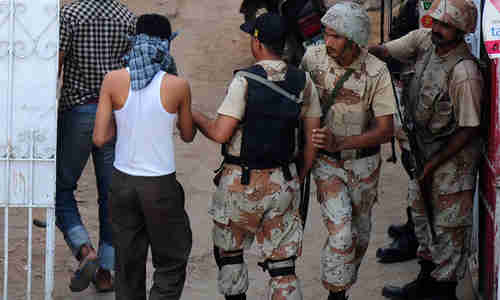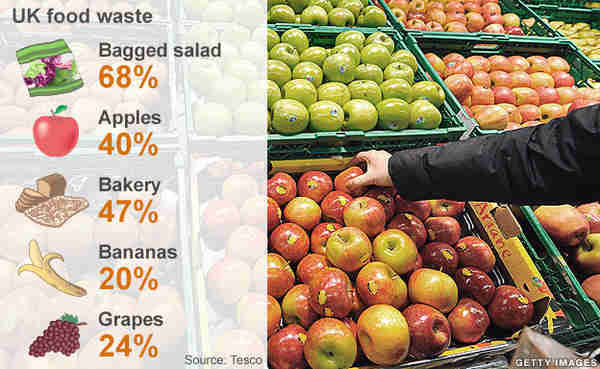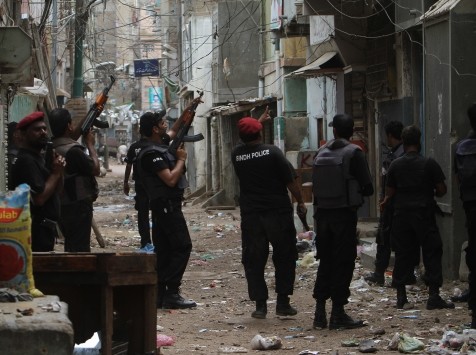
This morning’s key headlines from GenerationalDynamics.com
- Police crackdown tries to control exploding violence in Karachi, Pakistan
- The cost of Obamacare
- UK throws out 30% of all the food it grows
Police crackdown tries to control exploding violence in Karachi, Pakistan

Paramilitary soldiers arrest suspects in a residential area in Karachi (AFP)
Officials are bragging that they’ve arrested or killed over 5,000Pakistan, in a massive operation that was launched last month onSeptember 7. In addition, the police recovered 1,209 armsand 52 bombs.
The police operation was launched because of an explosion ofviolence in the last few years. Last year there were 2,124people killed on the streets. This year there were 2,058murders just till the end of September, but “only” 155of those were in September, indicating that the policecrackdown is having some effect.
Karachi is the economic center of Pakistan, and contains highlyvolatile mix of different ethnic and religious groups, many ofwhom openly hate each other, and others of whom just hateeveryone.
There are the Mohajirs, who are Urdu�speaking migrants from northernIndia who came to Pakistan following Partition, the 1947 partitioningof the Indian subcontinent into India and Pakistan, leading to ahorrific war between Hindus and Muslims. There are the Pashtuns, amajor ethnic group mainly in northwest Pakistan, but which in recentyears has been moving south into Karachi in order to escape theTaliban violence. To pursue their territorial, economic and politicalinterests, both the Awami National Party (ANP), which represents thePashtuns, and the Muttahida Quami Movement (MQM), which representsMohajirs, are increasingly turning to violence through proxy forces.If that isn’t bad enough, Karachi is increasingly the home ofterrorists from Tehrik-e-Taliban (TTP, the Pakistan Taliban).Dawn (Pakistan) and South Asia Terrorism Portal (SATP) and The Diplomat
The cost of Obamacare
The facts and figures about the Obamacare web site just keep pouringout in gruesome detail. It’s like watching a traffic accident. Youhave to slow down, and you can’t take your eyes off of it, despite thehorror of it.
According to one analyst I heard on tv on Monday, Healthcare.gov cost$300 million to develop, much higher than the $93.7 million that weheard last week. According to that analyst, that means 1.5 millionman-hours at $200 per hour. Can I get one of those jobs?
The NY Times is quoting one analyst as follows:
“One specialist said that as many as five millionlines of software code may need to be rewritten before the Website runs properly.”
Given that 1.5 million man-hours have already been spent on thisproject, the figure of 5 million lines of code needing rewriting isquite plausible.
As I’ve said several times in the last few days, I’ve had a lot ofpersonal experience with IT disasters, and this is easily the worstI’ve seen. ( “15-Oct-13 World View — Aetna CEO predicts Obamacare IT failures until 2017”)The prediction by Aetna CEO Mark Bertolini may be optimistic, in thesense that this web site may never work. Slate
UK throws out 30% of all the food it grows

UK food waste figures (BBC/Getty)
According to a survey conducted by the UK supermarket chain Tesco,every family in the UK wastes an estimated $1,200 per year, throwingaway food. Tesco found that 68% of salad sold in bags is thrown out,50% of bakery items, 40% of apples, 25% of grapes, and 20% of bananas.
I’ve seen stories like this before. The Tesco study only covers foodthat reached Tesco’s shelves, but I saw a story last year that claimedthat if you add in the amount of food that’s thrown out by farmers anddistributors, then 30-40% of all food grown in the UK is thrown out.The United Nations Food and Agriculture Organization (FAO) says thatone-third of all food produced for human consumption is lost or wasted- around 1.3 billion tons per year.
My reaction to this story is: What the hell is going on? Can’t someof this food be shipped to starving people in Africa and Asia? Orstarving people in Europe, for that matter.
Every now and then I do a story on how food prices have been risingfairly steadily since the 1990s. (See, for example “21-Nov-10 News — Food prices skyrocket to 2008 crisis levels” from 2010.) My conclusion isthat rising food prices is destabilizing populations, especially inmegacities, where children have to search through garbage dumps tofind food for their families to eat.
And the obvious question is this: Why are people starving whenone-third of all food produced for human consumption is wasted? Whydoesn’t some smart entrepreneur start a business shipping wasted foodfrom UK to Africa?
The answer, unfortunately, is that food is cheap only when you cangrow it yourself, or it’s grown nearby. Food is horrendouslyexpensive when it has to be shipped somewhere. Grown food is veryheavy, since a lot of it is mostly water, so shipping costs are high.And most grown food has to be refrigerated if it’s not going to beeaten right away, which makes shipping costs astronomical. And if anapple is shipped for a long time, it’s not going to look very good, sothe entrepreneur won’t make any money charging higher prices.
So, unfortunately, food prices are going to continue to go up, and thestarvation problem is only going to grow worse, especially inmegacities, where food has to be shipped in from long distances.BBC and United Nations Food and Agriculture Organization (FAO)
Permanent web link to this article
Receive daily World View columns by e-mail

COMMENTS
Please let us know if you're having issues with commenting.